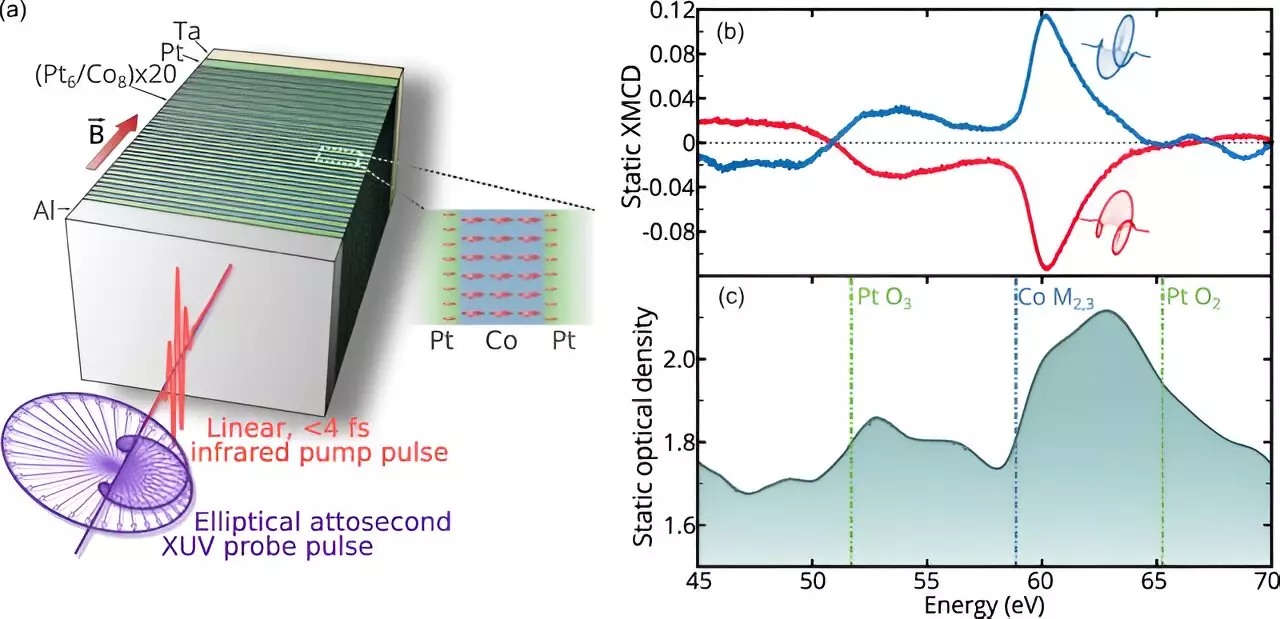In recent years, the field of spintronics has gained considerable attention due to its potential to transform electronic devices. Spin currents, which represent a novel type of electrical flow stemming from the ordered spins of electrons, hold a promise for faster and more energy-efficient electronics. A groundbreaking study led by an international team of physicists has revealed a method to generate these spin currents directly using ultrashort laser pulses, marking a significant stride in the quest for advanced electronic technologies.
The researchers, in their published findings in the esteemed journal Physical Review Letters, utilized a sophisticated technique involving both linearly polarized and circularly polarized lasers. Traditional methods of generating spin currents often relied on indirect methods—initially generating spins via lasers only to subsequently encounter challenges in alignment. Previous techniques would produce electrons with mixed orientations that necessitated filtration, a process that inefficiently wasted energy and time. The breakthrough achieved by this team lies in their ability to create spin currents directly, incorporating a much more uniform electron spin orientation.
The team developed a highly engineered target composed of 20 alternating layers of platinum and cobalt, with each layer measuring merely a nanometer in thickness. By applying a strong magnetic field perpendicular to these layers, the researchers successfully aligned the electron spins within both materials, setting the stage for a novel approach to manipulating spin currents.
The crux of their experiment involved firing a short, precisely-timed pulse from a polarized laser onto the layered target, followed by a second, circularly polarized probe laser aimed at the same spot. This combination resulted in an instantaneous shift of electron spins across the layers, occurring in mere femtoseconds—an incredibly rapid process that surpasses previously existing methodologies.
What is particularly striking is the ability of the lasers to induce a sudden transition in the magnetic ordering contained within the layers. This not only changed the magnetic characteristics of the materials but also showcased a new level of precision in manipulating spins at unprecedented speeds, granting researchers newfound capabilities in the field of spintronics.
The implications of this research extend far beyond the immediate results. By achieving a direct method of spin current generation, the researchers forecast a future where electronics are not only faster but also significantly more efficient than existing technologies. With the ability to produce ordered spin currents without the need for extensive filtering and aligning processes, the energy consumption associated with such devices could drastically decrease, leading toward a new era of sustainable electronics.
Furthermore, the alignment of theoretical calculations with experimental outcomes solidifies the credibility of the research, suggesting that further explorations in this domain could reveal new insights into electron dynamics. Such advancements could pave the way for innovations in various fields, from data storage solutions to quantum computing, showcasing the vast potential that lies ahead.
This remarkable achievement underscores the transformative power of ultrafast laser technology in harnessing spintronic potentials, positioning researchers closer to realizing a new horizon in electronic device performance.


Leave a Reply